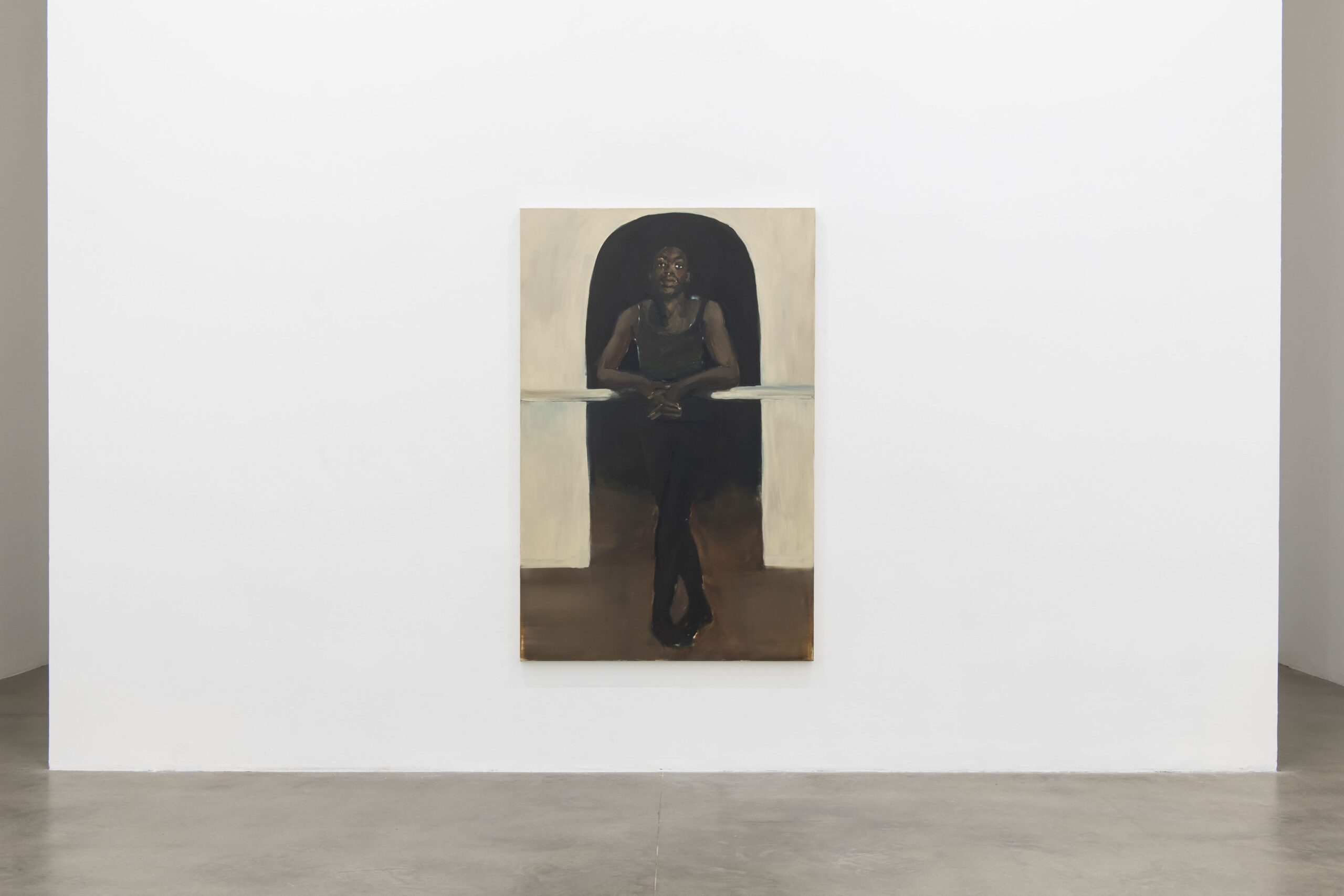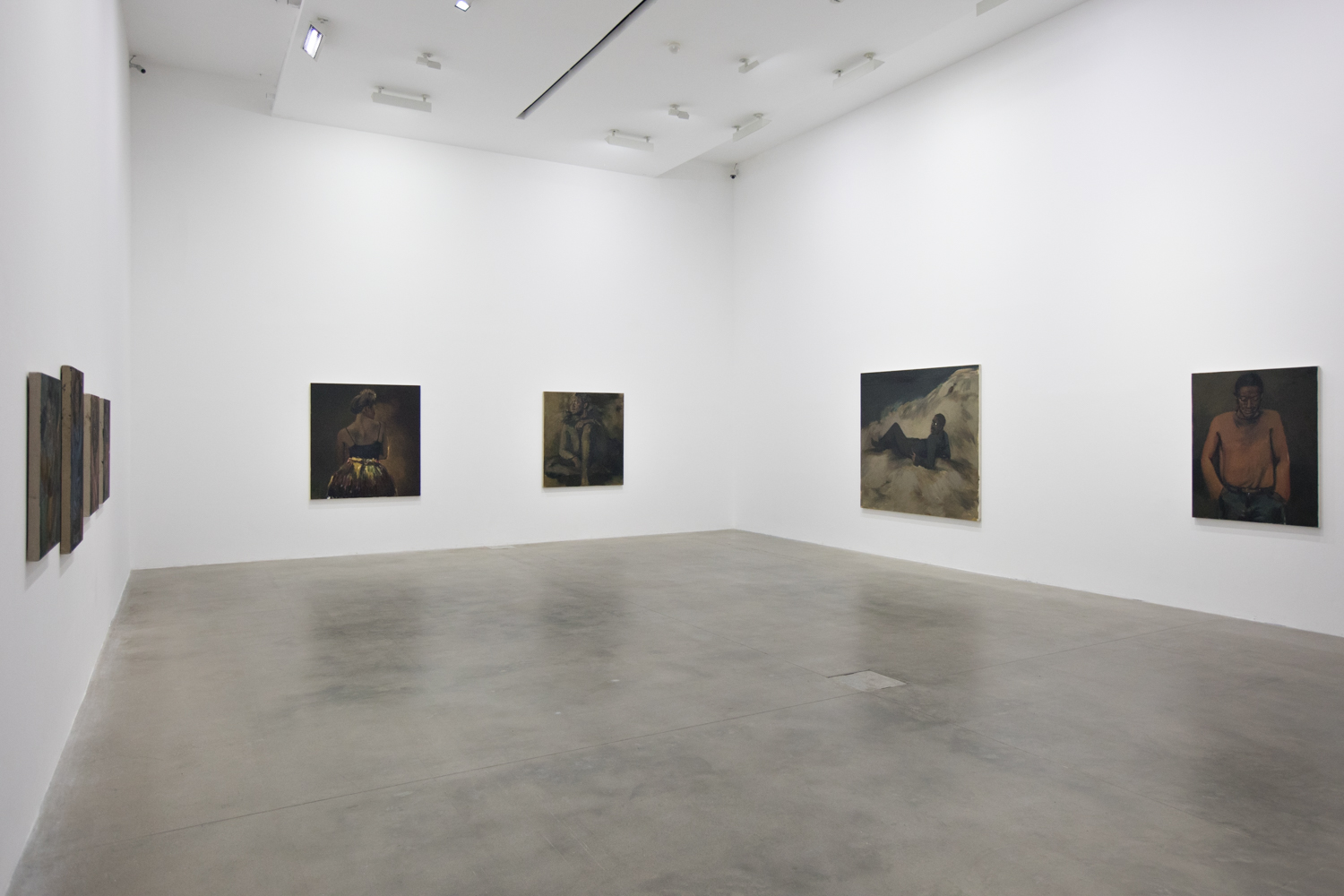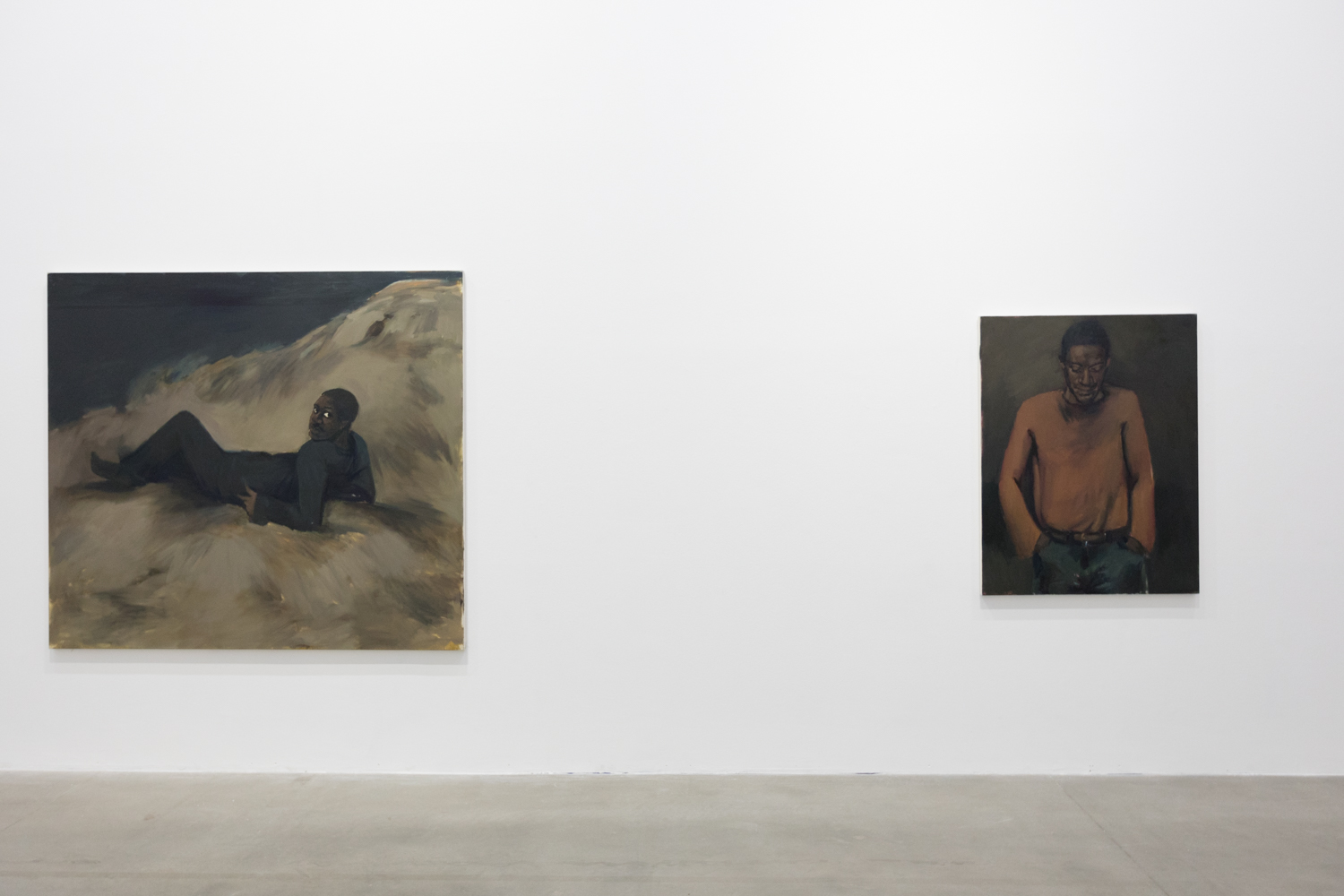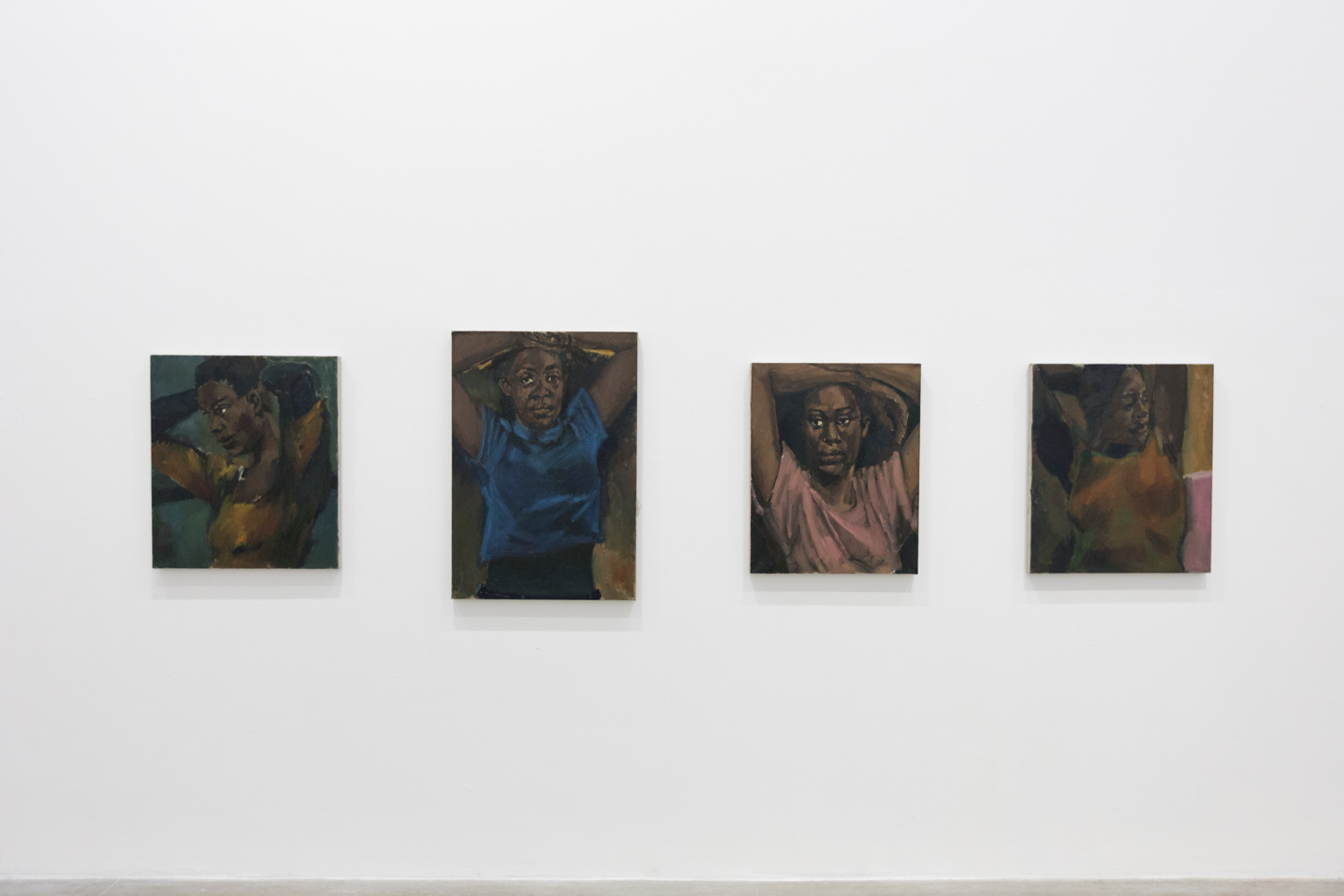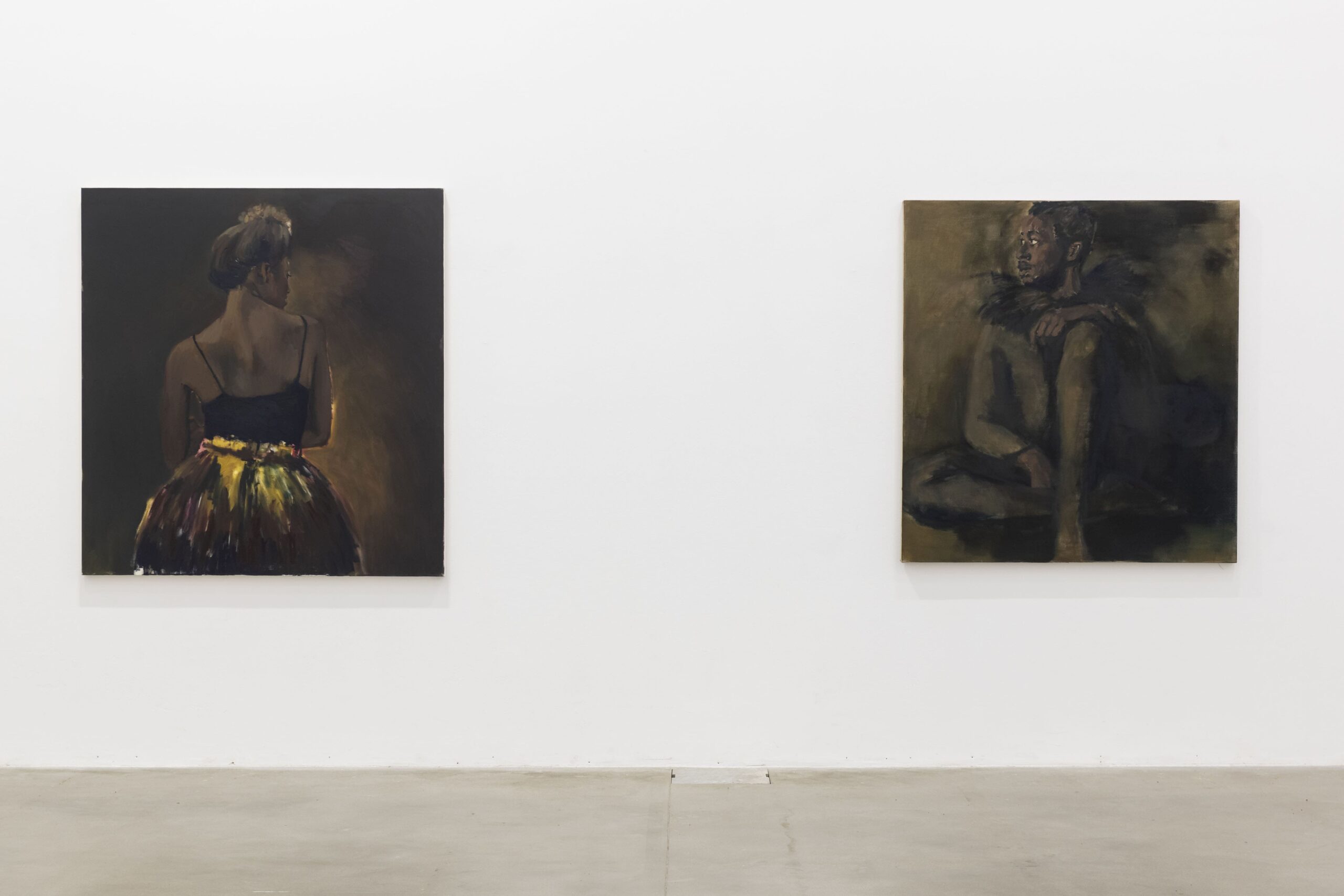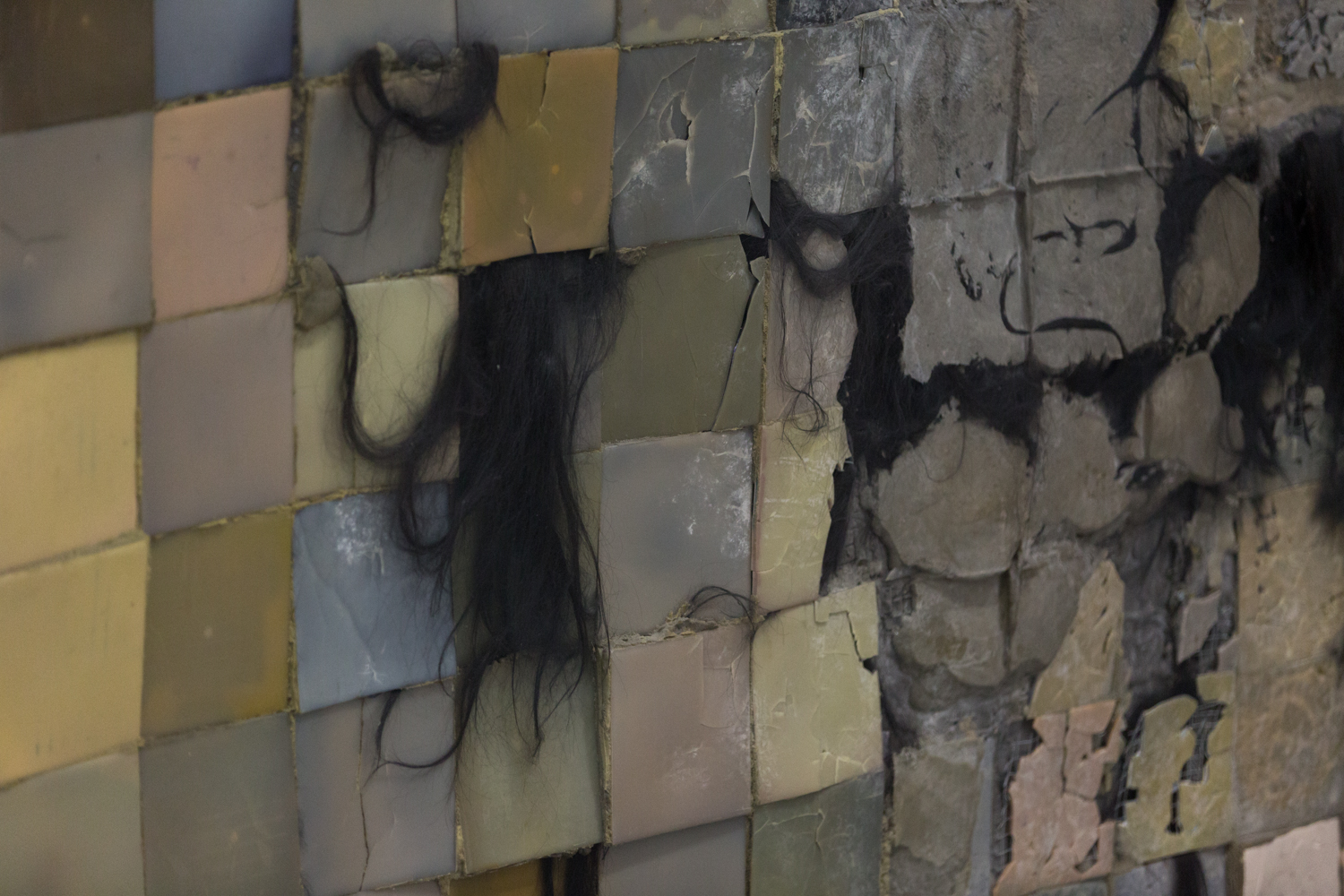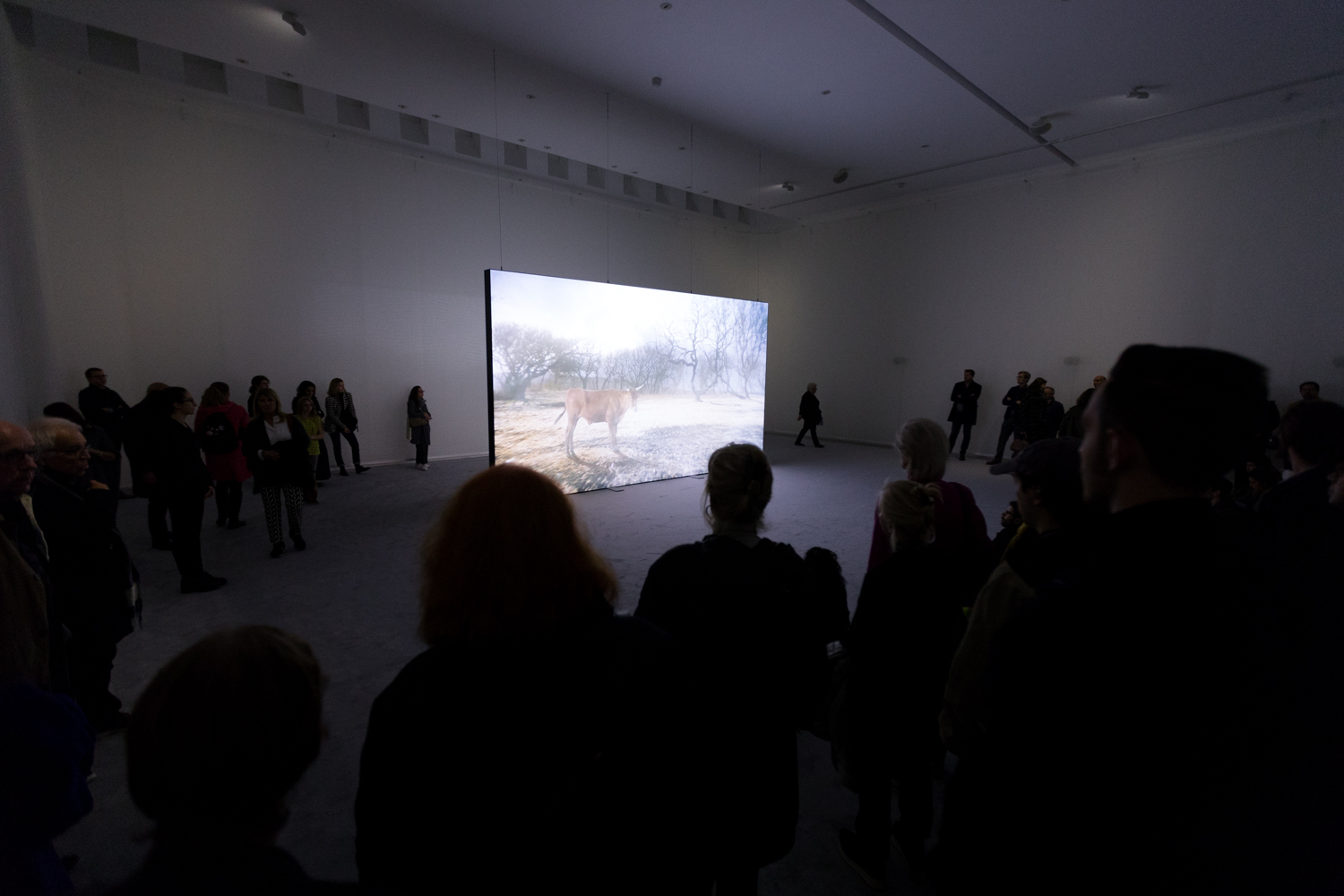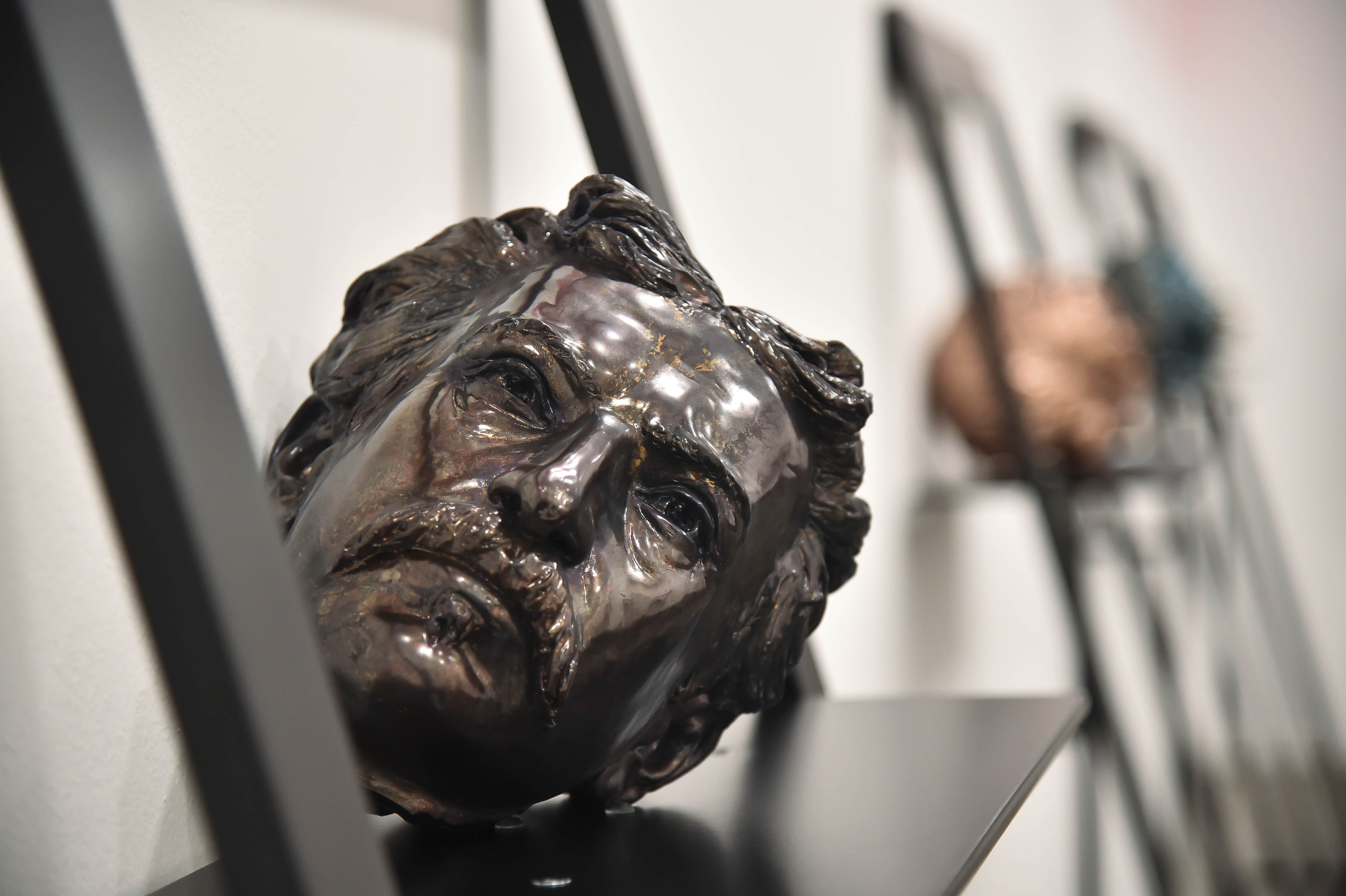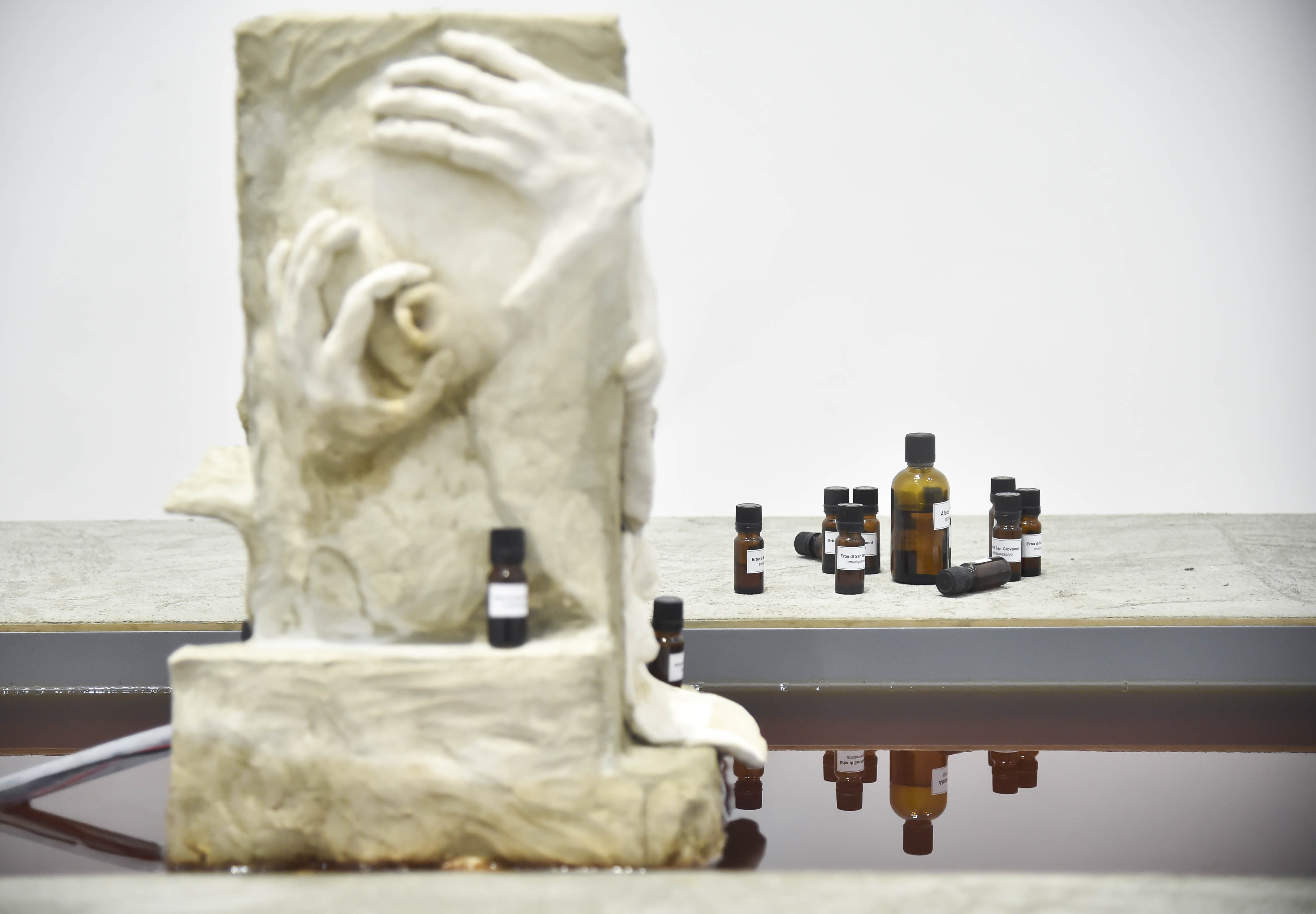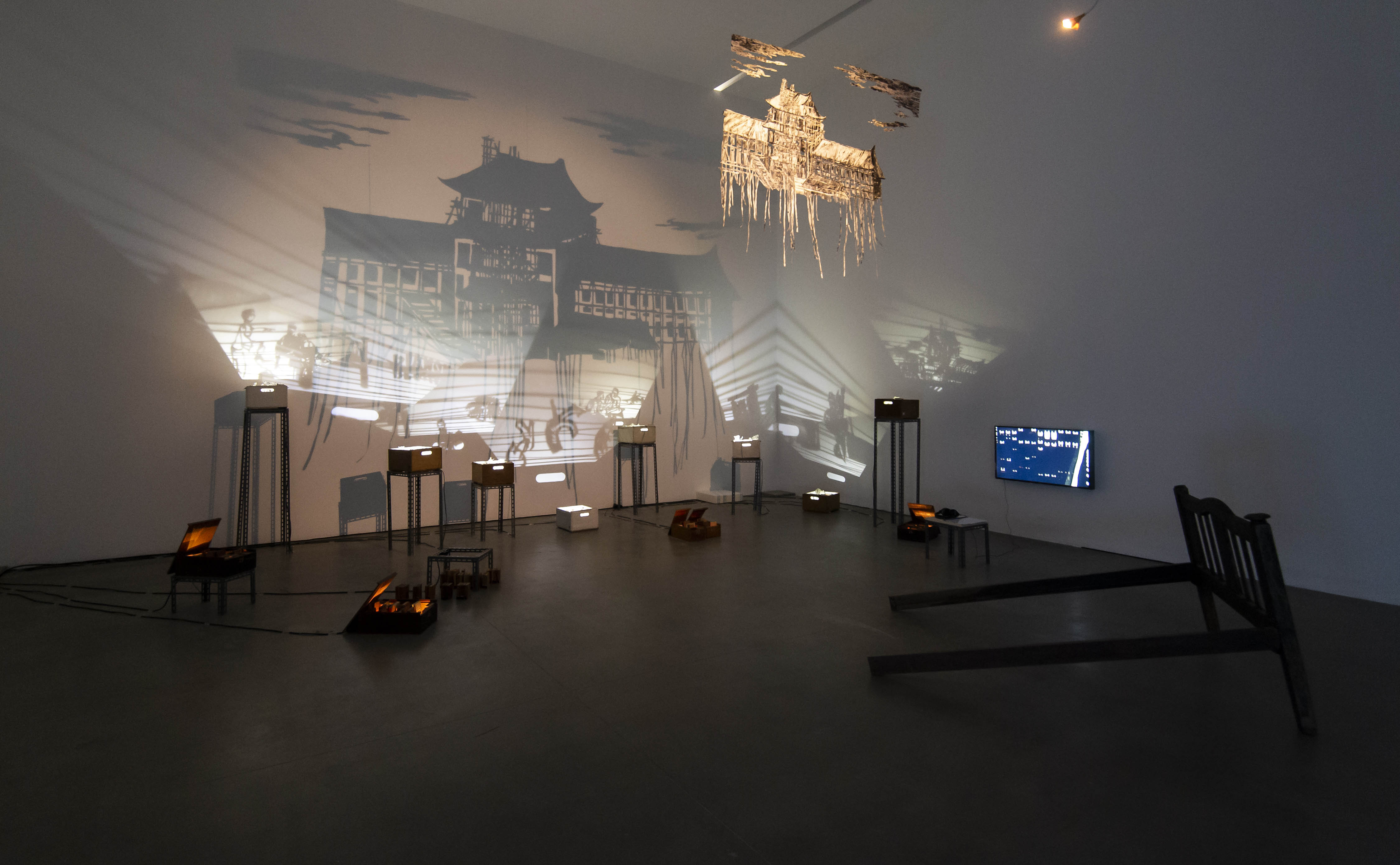Lynette Yiadom-Boakye (UK, 1977) paints fascinating figures, full of enigma. They seem to be portraits, but they deceive the observer; the people portrayed are not real, but are rather imaginary characters who only exist in the world of painting. Drawing from both her own memories and imagination, the British
artist of Ghanaian origin harnesses the idiosyncracies of painterly language to build the physical and psychological traits of the protagonists in her paintings. Lynette Yiadiom-Boakye writes with painting, through a skilful, almost scientific manipulation of color, form and scale. Her strokes are clearly visible, structural,
applied with an instant gesture that does not allow for revision—highlighting the material qualities of oil painting and its living presence, while at the same time allowing for an economy of means that, at times, reveals a raw, unresolved space.
This exhibition presents a group of works belonging to Sandretto Re Rebaudengo Collection. Dating from 2013 to 2018, the works are highly representative of the artist’s research, in which she analyzes the expressive possibilities of painting while simultaneously unveils its ideological, historical, and contemporary roots.
The works on view introduce both male and female characters, invariably black, with a stern, quiet, and pensive appearance. They are caught in a variety of positions and gestures, but all of them share the same sense of mysterious suspension, as if their connection to the world were unstable, about to be disrupted. The scarcity of contextual references, the barely outlined backdrops,
and the standard clothing only add to this feeling of vagueness. Unlike in the tradition of classical portrait painting, we lack any hints that may help us establish the particular traits of the individuals, such as their period, profession, or social status. lt is not their reality as persons which is represented, but rather
their intrinsic humanity, stripped to the essential but not trivialized.
The fact that all the figures are black is a central issue, which calls into question the Western canon and the absence or invisibility of the black subject in the history of our culture and art. In this respect, what becomes significant is the gaze: straight or averted, focused or distracted, that arises between the
characters and the viewer, since this interplay introduces a power dynamic of the subject/object relationship.
The most recent work on view, A File For a Martyr to a Cause, 2018, is a polyptych.
Its sequence of close-ups seems to evoke a photographic or filmic device. The pose turns into a gesture, with an immobility that generates movement, indicative of the sort of choreography which characterizes the overall practice of the artist and her way of linking bodies together, creating a silent dialogue between the
figures.
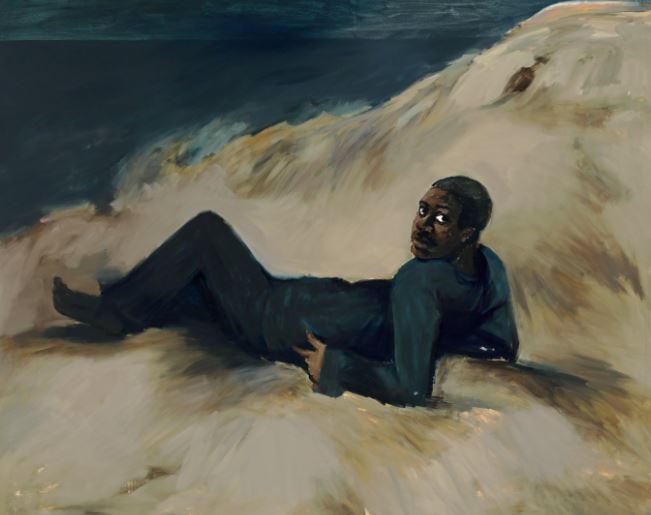
Lynette Yiadom-Boakye. Works from the Sandretto Re Rebaudengo Collection
Fondazione Sandretto Re Rebaudengo
2 November 2018
- 3 February 2019
